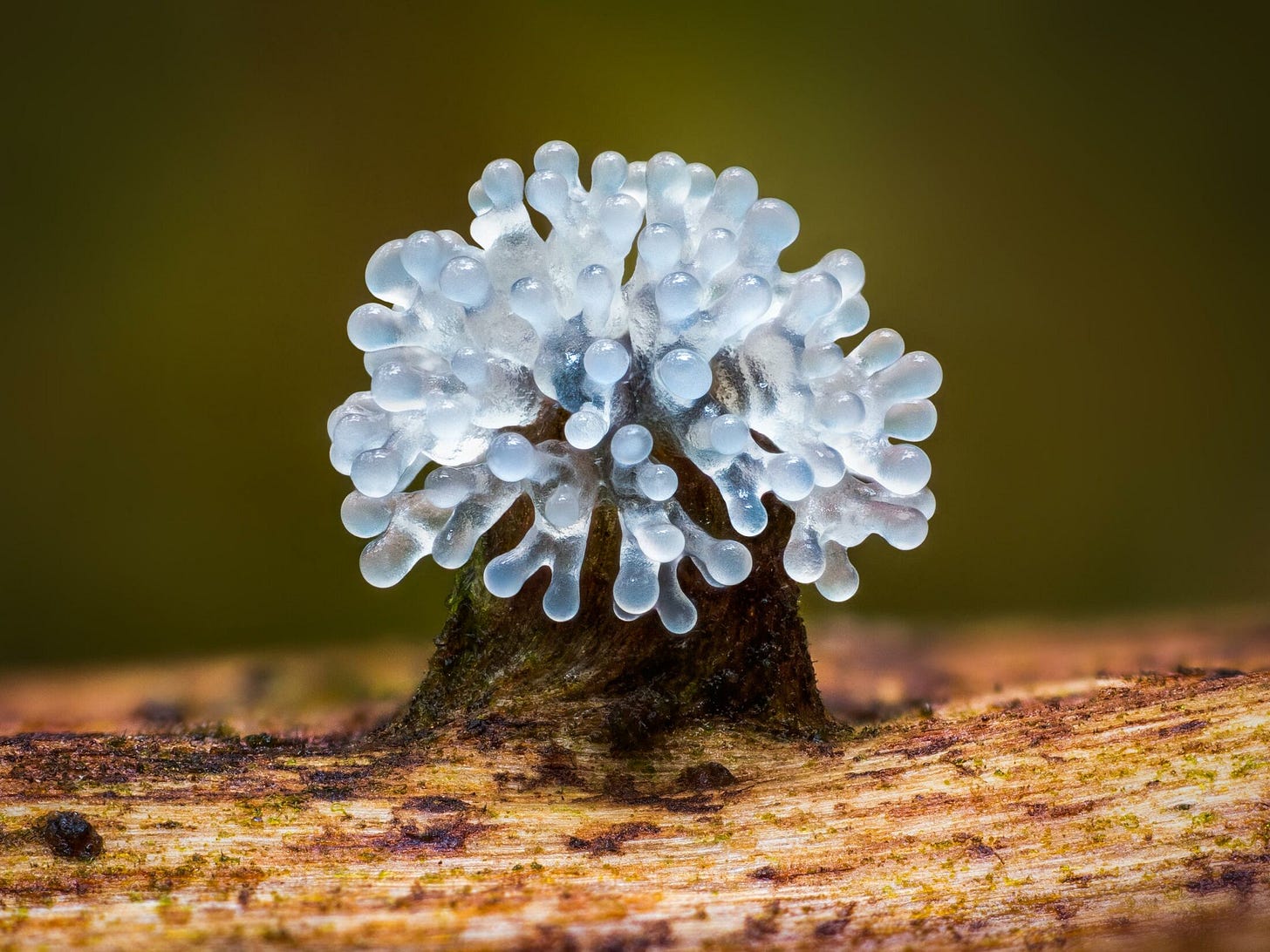Transmission #51: Slime Molds, Emergent Language, Plastic Landfill and Chinese Livestreamers.
Design, ideas and other flotsam.
Hello. Welcome.
This is Transmissions by me, Marty Brown.
What is Transmissions? It’s an ongoing, usually fortnightly newsletter that collates some of the more interesting stories, links, quotes and other curios that float my way.
I’m always keen to get your thoughts on what you make of it, and if you have stumbled across any links you’d love to share, please get in touch!
If you’re reading this but aren’t yet a subscriber, then sign up now to get more of these in your inbox, and don’t forget to tell your friends!
Guest post
Untitled Objects
Jonathan Hoefler • Link
A guest post from the one and only Mr James De Vries.
My fancy has been tickled lately by typeface designer Jonathan Hoefler’s delightful AI generated fantasy machines with accompanying stories. Quite amazing and a fun use of the available tech.
Seen something you’d love to share? Drop me a note in the comments.
Design
What Is ChatGPT Doing … and Why Does It Work?
Stephen Wolfram • Link
Cut out and keep. If you’ve toyed around with ChatGTP or Bing lately you might wonder how this all works under the hood. Then this article is for you. The answer is reasonably complex, but Wolfram does a superlative job here of breaking down the basic principles of these Large Language Models in layman’s terms.
What is extraordinary is not just their ability to mimic written language so convincingly, it’s that this ability somehow just emerges from their architecture. We can’t define the ‘rules’ of language well enough to algorithmically program it, yet by ingesting large quantities of the internet, and straining through billions of tuned parameters, these models have kind of ‘figured out’ the underlying structures well enough to write and converse quite naturally.
"So how is it, then, that something like ChatGPT can get as far as it does with language? The basic answer, I think, is that language is at a fundamental level somehow simpler than it seems. And this means that ChatGPT—even with its ultimately straightforward neural net structure—is successfully able to “capture the essence” of human language and the thinking behind it. And moreover, in its training, ChatGPT has somehow “implicitly discovered” whatever regularities in language (and thinking) make this possible."
Anyone who has used these models and doesn’t think they are the future is kidding themselves.
Ideas
Creatures That Don’t Conform
Lucy Jones • Emergence Magazine • Link
Guaranteed to be the best article about slime mold that you will read today. Beautifully written, poetic and moving. A wondrous essay.
Iridescent rainbow orbs bursting into tangerine spun sugar. Pearly spheres of goo. Sorbet corn dogs leaning into one another with matching bouffants. Bright yellow blackberries. A bunch of Mr. Blobby’s babies. Golden goblets overflowing with effervescent honeycomb. Opalescent spherules in crinkled sweet wrappers. Amaretti flecked with flakes of soap.
Chart of the Week
Which is not actually that much. Via the always excellent Hannah Richie.
Other
🤳 Jonathain Haidt lays out the case (again) that social media is bad for the mental health of young people, girls especially. Link
📈 Tyler Cowen talking eruditely about pretty much everything. This time, he’s optimistic that AI will power us through the ‘great stagnation’ we’ve been in since the 1970’s. Link
👑 Codebreakers uncovered the secret of lost letters Mary Queen of Scots wrote from jail. Link
🤩 Chinese livestreaming platforms allow users to search locally- wealthier neighborhoods mean much higher donations because of the perceived availability of the streamer. Cue the extraordinary sight of dozens of young women huddled together, livestreaming under a bridge. Link
Thanks for reading, I hope you’ve enjoyed it. See you in a fortnight!







Love the stress chart.
I can vouch for the theory of stress accumulation. Stress of daily life contributes to my Parkinson's symptoms.
I try and minimise stress wherever possible. But in today's hyperconnected world that's next to impossible.
Whenever we go away to rural escapes for longer than a few days, my symptoms dramatically reduce. To the point where I begin to question if I have the disease. But one thirty minute trip in a car and it's back like it never went away, and I can't walk properly or stop shaking again. And it takes another three days to get it out of my system again.
Beware the invisible killer!